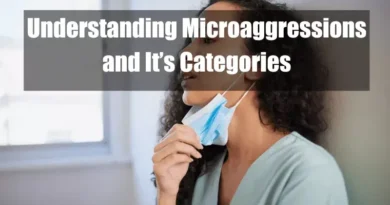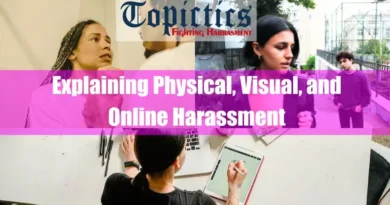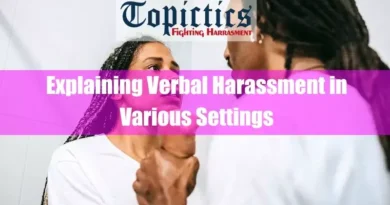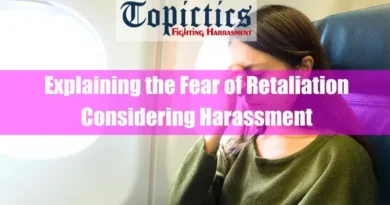Homophobia, Biphobia, and Sexual Harassment
In a world striving towards inclusivity and equality, the pervasive presence of homophobia, biphobia, and sexual harassment remains a stark reminder of the challenges faced by LGBTQ+ individuals. These interconnected forms of discrimination not only violate fundamental human rights but also inflict profound emotional and psychological harm. This comprehensive article delves into the intricate relationship between homophobia, biphobia, and sexual harassment, shedding light on their harmful effects and exploring strategies for prevention and redress.
Takeaways
| Key Points |
|---|
| – Homophobia: Fear, hatred, or prejudice against LGBTQ+ individuals, manifesting in subtle disapproval or overt violence. – Biphobia: Targeted prejudice against bisexuals, often fueled by misconceptions that invalidate bisexuality. – Sexual Harassment: Unwanted sexual actions that create a hostile environment. |
| – Homophobia: Can include verbal abuse, social exclusion, employment discrimination, denial of services, physical violence, legal discrimination, and hate speech. – Biphobia: Includes misconceptions like bisexuality being a “phase,” or stereotypes about promiscuity and invalidation of bisexual identities. – Sexual Harassment: Includes unwanted advances, offensive comments, or physical actions that create hostile environments, potentially leading to severe emotional and career impacts. |
| Roots: – Societal Norms: Homophobia and biphobia are rooted in rigid gender stereotypes, lack of education, historical discrimination, religious beliefs, fear of the unknown, and the desire to conform to societal norms. – Intersectionality: Biphobia often overlaps with homophobia, exacerbating discrimination and harassment against bisexual individuals. |
Defining the Terms Homophobia, Biphobia, and Sexual Harassment
Homophobia, the fear, hatred, or prejudice against lesbian, gay, bisexual, transgender, and queer (LGBTQ+) individuals, manifests in various forms, ranging from subtle expressions of disapproval to overt acts of violence. Biphobia, specifically targeting individuals who identify as bisexual, often stems from misconceptions and stereotypes that invalidate their sexual orientation. Sexual harassment, on the other hand, encompasses unwanted sexual propositions, appeals for sexual favors, and any verbal or physical actions of a sexual nature that establish an inhospitable or offensive atmosphere.
It’s important to distinguish between prejudice and discrimination. Prejudice refers to preconceived negative opinions about a group, while discrimination involves acting on those prejudices through unfair treatment or denying opportunities.
Examples
A. Homophobia
Name-calling, slurs, and insults are common forms of verbal abuse directed at LGBTQ+ individuals. LGBTQ+ individuals may face ostracism, bullying, and social isolation due to their sexual orientation or gender identity. LGBTQ+ individuals may encounter hiring bias, workplace harassment, and unequal opportunities. LGBTQ+ individuals may be denied access to essential services, such as healthcare, housing, and education. LGBTQ+ individuals may face physical assaults, hate crimes, and violence motivated by homophobia.
LGBTQ+ individuals may face discriminatory laws and policies that restrict their rights and freedoms. Hate speech can contribute to a hostile environment and normalize discrimination against LGBTQ+ individuals. Homophobic rhetoric and hate speech can be used as a political tool to scapegoat and marginalize LGBTQ+ individuals.
B. Biphobia
Bisexual individuals are often dismissed as being “confused” or “indecisive,” implying that their sexual orientation is not valid or genuine. The belief that sexuality is a binary choice between being straight or gay invalidates bisexual identities and places pressure on bisexual individuals to conform to these rigid categories. The assumption that bisexual individuals are promiscuous or incapable of monogamous relationships perpetuates harmful stereotypes and stigmas. Bisexual individuals are often overlooked or excluded from LGBTQ+ representation, reinforcing the perception that their experiences are less important.
The misconception that bisexuality is a choice rather than an inherent sexual orientation invalidates bisexual identities and can lead to accusations of “experimenting” or “attention-seeking.” The belief that bisexual individuals are attracted to both men and women equally reinforces unrealistic expectations and can create additional pressure to conform to societal norms. The misconception that bisexuality is a stepping stone to homosexuality or heterosexuality perpetuates the idea that bisexual identities are not stable or enduring. The assumption that bisexual individuals are always romantically involved with someone from both genders reinforces stereotypes about promiscuity and undermines the complexity of bisexual relationships.
C. Sexual Harassment
Unwelcome sexual advances, requests for sexual favors, and other verbal or physical conduct of a sexual nature that creates a hostile or offensive environment. Examples of sexual harassment include:
A boss making sexual comments to an employee, a coworker making unwanted physical contact with a colleague, or a customer making sexually suggestive remarks to a server. Sexual harassment can have a devastating impact on victims, leading to emotional distress, anxiety, depression, and even post-traumatic stress disorder. It can also damage the victim’s career and make finding and maintaining employment difficult. In severe cases, sexual harassment can lead to physical violence.

Understanding the Roots of Homophobia and Biphobia
Homophobia and biphobia are deeply rooted in societal norms and prejudices that perpetuate harmful stereotypes about LGBTQ+ individuals. These stereotypes often portray LGBTQ+ identities as unnatural, deviant, or even threatening. Such misconceptions fuel discrimination and violence, creating a climate of fear and hostility.
A. Sexual Harassment as a Manifestation of Homophobia and Biphobia
Sexual harassment can serve as a tool of intimidation and control against LGBTQ+ individuals. Perpetrators may use sexual advances or unwelcome comments as a means of asserting dominance, reinforcing societal prejudices, and silencing dissenting voices. Sexual harassment can also be a form of “corrective” behavior aimed at forcing LGBTQ+ individuals to conform to heteronormative expectations.
1. What are the underlying societal and cultural factors that contribute to homophobia?
- Religious Beliefs: Certain religious doctrines condemn homosexuality, leading to societal and individual prejudice against LGBTQ+ individuals.
- Gender Stereotypes: Rigid gender norms and expectations often equate homosexuality with a deviation from traditional roles, fostering homophobia.
- Lack of Education and Understanding: Misconceptions and stereotypes about LGBTQ+ individuals perpetuated through limited exposure and education contribute to homophobia.
- Historical Legacy of Discrimination: Homophobia has deep roots in societal norms and historical discrimination, creating a persistent cycle of prejudice.
- Fear of the Unknown: Unfamiliarity with LGBTQ+ identities and experiences can lead to fear and suspicion, fueling homophobia.
- Conformity to Societal Norms: Pressure to conform to societal expectations and avoid social disapproval can motivate homophobia.
- Lack of Inclusive Representation: Insufficient representation of LGBTQ+ individuals in media, culture, and leadership reinforces negative stereotypes and contributes to homophobia.
- Privilege and Power Dynamics: Heterosexual individuals may perceive homosexuality as a threat to their social status or power, leading to homophobia.
2. How does homophobia manifest in different forms of discrimination and violence against LGBTQ+ individuals?

- Verbal Abuse: Name-calling, slurs, and insults are common forms of verbal abuse directed at LGBTQ+ individuals.
- Social Exclusion: LGBTQ+ individuals may face ostracism, bullying, and social isolation due to their sexual orientation or gender identity.
- Employment Discrimination: LGBTQ+ individuals may encounter hiring bias, workplace harassment, and unequal opportunities.
- Denial of Services: LGBTQ+ individuals may be denied access to essential services, such as healthcare, housing, and education.
- Physical Violence: LGBTQ+ individuals may face physical assaults, hate crimes, and violence motivated by homophobia.
- Legal Discrimination: LGBTQ+ individuals may face discriminatory laws and policies that restrict their rights and freedoms.
- Hate Speech: Homophobic rhetoric and hate speech can contribute to a hostile environment and normalize discrimination against LGBTQ+ individuals.
- Political Attacks: Homophobia can be used as a political tool to scapegoat and marginalize LGBTQ+ individuals.
3. What unique stereotypes and misconceptions contribute to biphobia, and how do they impact bisexual individuals?
- The Erasure Myth: Bisexual individuals are often dismissed as being “confused” or ” indecisive,” implying that their sexual orientation is not valid or genuine.
- The Binary Myth: The belief that sexuality is a binary choice between being straight or gay invalidates bisexual identities and places pressure on bisexual individuals to conform to these rigid categories.
- The Monogamy Myth: The assumption that bisexual individuals are promiscuous or incapable of monogamous relationships perpetuates harmful stereotypes and stigmas.
- The Invisibility Myth: Bisexual individuals are often overlooked or excluded from LGBTQ+ representation, reinforcing the perception that their experiences are less important.
- The Assumption of Choice: The misconception that bisexuality is a choice rather than an inherent sexual orientation invalidates bisexual identities and can lead to accusations of “experimenting” or “attention-seeking.”
- The Bisexual Paradox: The belief that bisexual individuals are attracted to both men and women equally reinforces unrealistic expectations and can create additional pressure to conform to societal norms.
- The “Gateway” Myth: The misconception that bisexuality is a stepping stone to homosexuality or heterosexuality perpetuates the idea that bisexual identities are not stable or enduring.
- The “Playing Both Sides” Myth: The assumption that bisexual individuals are always romantically involved with someone from both genders reinforces stereotypes about promiscuity and undermines the complexity of bisexual relationships.
Organizations specifically focused on bisexuality, such as the Bisexual Resource Center, for further information.
4. How does biphobia intersect with homophobia in perpetuating discrimination and harassment against LGBTQ+ individuals?
- Reinforcing Homophobic Narratives: Biphobic stereotypes often mirror homophobic rhetoric, contributing to the overall marginalization of LGBTQ+ individuals.
- Eroding LGBTQ+ Unity: Biphobia can create divisions within the LGBTQ+ community, making it challenging to build a unified front against discrimination.
- Undermining Bisexual Visibility: Biphobia can hinder the visibility of bisexual individuals, perpetuating their exclusion from LGBTQ+ representation and support.
- Exacerbating Sexual Harassment: Bisexual individuals may face unique forms of sexual harassment that target their perceived “promiscuity” or their willingness to engage with both genders.
- Invalidating Lived Experiences: Biphobia can deny the authenticity of bisexual experiences, leading to feelings of isolation, invalidation, and self-doubt.
- Perpetuating Mental Health Challenges: Biphobia can contribute to anxiety, depression, and low self-esteem among bisexual individuals.
- Limiting Access to Resources: Biphobia can hinder bisexual individuals’ access to culturally competent healthcare, mental health services, and LGBTQ+ support groups.
- Undermining Legal Protections: Biphobia can lead to the exclusion of bisexual individuals from legal protections and policies specifically designed to safeguard the rights of LGBTQ+ individuals.
B. Unique Challenges Faced by LGBTQ+ Individuals
LGBTQ+ individuals face unique challenges in reporting and addressing sexual harassment. Fear of being ostracized or labeled “overly sensitive” often discourages them from coming forward. Additionally, concerns about confidentiality and lack of support from institutions can further deter reporting.
1. What do LGBTQ+ youth face the specific challenges in navigating homophobia in school and social settings?
- Limited Support Systems: LGBTQ+ youth may lack supportive family environments and may struggle to find safe spaces and peer groups.
- Bullying and Harassment: LGBTQ+ youth are at an increased risk of bullying, cyberbullying, and harassment in school and social settings.
- Mental Health Impacts: Homophobia can contribute to anxiety, depression, low self-esteem, and suicidal ideation among LGBTQ+ youth.
- Difficulty Finding Role Models: LGBTQ+ youth may struggle to find positive role models and mentors who can provide guidance and support.
- Identity Development Challenges: Navigating sexual orientation and gender identity in a homophobic environment can be confusing and isolating for LGBTQ+ youth.
- Limited Access to Resources: LGBTQ+ youth may lack access to culturally competent mental health services, support groups, and educational resources.
- Fear of Coming Out: The fear of rejection and negative consequences can prevent LGBTQ+ youth from openly expressing their identities.
- Pressure to Conform: Societal expectations and pressure to conform to heteronormative standards can be overwhelming for LGBTQ+ youth.
In addition to the general difficulties of navigating homophobia in social settings, LGBTQ+ youth in the workplace face unique challenges. Their limited work experience can make them feel invisible and unsure how to navigate potentially biased environments. Furthermore, the pressure to conform to heteronormative expectations can be particularly stifling, hindering their ability to be open about their identities.
2. What do bisexual individuals face the specific challenges in finding acceptance and support within both heterosexual and LGBTQ+ communities?
- Dual Discrimination: Bisexual individuals may face discrimination from both heterosexual and LGBTQ+ communities, feeling marginalized from both sides of the spectrum.
- Questioning of Identity: Bisexual individuals may experience questioning or disbelief about their sexual orientation, leading to confusion and self-doubt.
- Pressure to Conform: Bisexual individuals may face pressure to conform to either heterosexuality or homosexuality, erasing their unique identity.
- Limited Representation: Bisexual individuals may have difficulty finding positive role models and characters in media and culture who represent their experiences.
- Exclusion from LGBTQ+ Spaces: Bisexual individuals may feel excluded from LGBTQ+ spaces due to the perception that their experiences are less valid or significant.
- Misconceptions about Relationships: Bisexual individuals may face assumptions about the stability or legitimacy of their relationships due to stereotypes about promiscuity or indecision.
- Lack of Awareness: Limited awareness and understanding of bisexuality can lead to insensitive comments, microaggressions, and exclusionary behavior.
- Invisibility in Research: Bisexual individuals may be underrepresented in LGBTQ+ research, making it difficult to address their specific needs and challenges.
Bisexual individuals often face specific challenges in their relationships. They may feel pressure to “choose a side” and identify as exclusively gay or straight. Additionally, their relationships can be met with skepticism, with partners or even friends questioning their legitimacy or stability due to biphobic stereotypes.
Addressing Homophobia, Biphobia, and Sexual Harassment
Addressing homophobia, biphobia, and sexual harassment requires a multifaceted approach that encompasses prevention, intervention, and support.
A. Prevention Strategies
Effective prevention strategies include:
- Educating individuals about LGBTQ+ identities and experiences
- Promoting inclusive policies and practices in workplaces and educational settings
- Encouraging open communication and bystander intervention
- Intervention and Support
When sexual harassment occurs, it is essential to have clear procedures for reporting, investigating, and addressing complaints. Additionally, providing support services for victims is crucial, helping them cope with the emotional and psychological effects of harassment.
1. What are some effective strategies for bystander intervention to prevent and address homophobia- or biphobia-driven sexual harassment?
- Recognize the Signs: Be aware of the verbal and nonverbal cues that may indicate sexual harassment, such as unwanted advances, offensive jokes, or persistent attention.
- Speak Up: If you witness sexual harassment, speak up calmly and assertively. Express your disapproval of the behavior and offer support to the victim.
- Engage the Bystander: Encourage others to join you in intervening. The more people who speak up, the more powerful the message will be.
- Document the Incident: Take notes or record the incident to provide evidence.
- Report the Harassment: Encourage the victim to report the harassment to the appropriate authorities, such as human resources or a supervisor.
- Offer Ongoing Support: Stay connected with the victim and provide ongoing emotional support.
- Educate Yourself: Learn more about homophobia, biphobia, and sexual harassment to understand better the dynamics and how to intervene effectively.
- Advocate for Change: Support initiatives that promote inclusive policies and practices that address homophobia, biphobia, and sexual harassment.
2. How can we effectively educate individuals about the legal and ethical implications of sexual harassment, particularly in the context of homophobia and biphobia?
- Define Sexual Harassment: Clearly define sexual harassment, including specific examples of unwelcome and offensive behavior.
- Address Homophobia and Biphobia: Explain how homophobia and biphobia can manifest in sexual harassment, highlighting the unique challenges faced by LGBTQ+ individuals.
- Discuss Legal Implications: Inform individuals about the legal consequences of sexual harassment, including potential civil and criminal liability.
- Emphasize Ethical Considerations: Discuss the ethical obligations to respect the rights and dignity of all individuals, regardless of their sexual orientation or gender identity.
- Use Real-World Examples: Provide real-world scenarios and case studies to illustrate the concepts and help individuals recognize sexual harassment in various contexts.
- Encourage Open Dialogue: Create a safe and supportive environment for open dialogue and discussion about sexual harassment and its implications.
- Incorporate Diversity and Inclusion: Ensure that educational materials and training sessions incorporate diverse perspectives and address the unique experiences of LGBTQ+ individuals.
- Promote Ongoing Learning: Encourage individuals to continue learning about sexual harassment, homophobia, and biphobia to maintain a culture of respect and accountability.
The Human Rights Campaign and GLAAD provide educational resources about LGBTQ+ identities.
3. What role can organizations and institutions play in creating a culture of zero tolerance for all forms of discrimination, including homophobia, biphobia, and sexual harassment?
- Establish Clear Policies: Develop and implement clear and comprehensive policies that explicitly prohibit homophobia, biphobia, and sexual harassment.
- Provide Training and Education: Offer regular training and education programs for all employees and staff members to raise awareness and understanding of these issues.
- Create Reporting Mechanisms: Establish accessible and confidential reporting procedures for victims of homophobia, biphobia, and sexual harassment.
- Enforce Consequences: Ensure swift and effective consequences for individuals who engage in discriminatory or harassing behavior.
- Foster a Culture of Inclusion: Promote a workplace culture that values diversity, respect, and inclusion and encourages open communication about these issues.
- Hold Leaders Accountable: Ensure leaders at all levels set a strong example by upholding the organization’s commitment to zero tolerance for discrimination and harassment.
- Regularly Assess the Climate: Conduct regular assessments of the workplace climate to identify and address any issues related to homophobia, biphobia, and sexual harassment.
- Continuous Improvement: Continuously strive to improve policies, procedures, and training programs to maintain a culture of zero tolerance for all forms of discrimination.
Conclusion
The intersection of homophobia, biphobia, and sexual harassment poses a significant threat to the well-being and equality of LGBTQ+ individuals. Recognizing and addressing these interconnected forms of discrimination is critical to creating a more just and inclusive society. By fostering understanding, promoting respect, and implementing effective prevention and intervention strategies, we can work towards a world where all individuals can thrive, regardless of their sexual orientation or gender identity.
FAQ
What is Internalized Homophobia?
Internalized homophobia describes the process whereby LGBTQ individuals adopt society’s negative attitudes toward homosexuality, resulting in self-directed stigma and internal conflict. This internalization can lower self-esteem and provoke mental distress, hindering identity acceptance and authentic community engagement.
What is Structural Homophobia?
Structural homophobia refers to systematic discrimination embedded within institutions, policies, and cultural norms that marginalize LGBTQ individuals. This pervasive prejudice restricts access to resources, legal rights, and social opportunities, reinforcing inequalities and limiting advancements for non-heterosexual populations in multiple spheres of society.
What is Heteronormativity?
Heteronormativity is the assumption that heterosexuality is the default or normal orientation, establishing strict binary gender roles. This cultural norm marginalizes non-heterosexual identities by influencing media representations, policy decisions, and social practices, thereby devaluing and excluding diverse sexual orientations and gender expressions.
What is Cisnormativity?
Cisnormativity is the societal expectation that one’s gender identity must align with the sex assigned at birth. This norm marginalizes transgender and non-binary individuals, reinforcing binary gender distinctions and often leading to exclusionary practices in healthcare, education, and employment, which contributes to broader discrimination against diverse gender expressions.
What is Biphobia?
Biphobia is the prejudice and discrimination specifically directed toward bisexual individuals. It manifests through stereotyping, invalidation, and the erasure of bisexuality, often resulting in exclusion from both heterosexual and homosexual communities. This bias undermines bisexual identities and can contribute to mental health challenges and social isolation.
What is Bisexual Erasure?
Bisexual erasure is the systematic exclusion or dismissal of bisexuality as a valid sexual orientation. It minimizes or ignores the experiences and contributions of bisexual individuals, reinforcing a binary view of sexuality. This phenomenon deepens feelings of isolation and invalidation, affecting personal identity and community belonging.
What is Monosexism?
Monosexism is the belief that individuals are naturally attracted to only one gender, thereby invalidating bisexuality and other non-monosexual orientations. This bias surfaces in social attitudes, cultural narratives, and policies, contributing to the marginalization and misunderstanding of those whose attractions are fluid or extend beyond a single gender.
What is Queerphobia?
Queerphobia encompasses the negative attitudes, fear, and hostility directed toward people who identify as queer or defy traditional sexual and gender norms. It manifests as overt discrimination and subtle bias alike, affecting social interactions, mental health, and opportunities while reinforcing broader resistance to non-normative identities and expressions.
What is Internalized Biphobia?
Internalized biphobia occurs when bisexual individuals absorb societal prejudice, leading to self-directed negativity and self-doubt about their sexual orientation. This internal conflict can lower self-esteem, provoke mental health challenges, and hinder the development of authentic relationships as individuals battle ingrained stigma and exclusion from both heterosexual and homosexual circles.
What is Sexual Stigma?
Sexual stigma refers to the negative labeling and devaluation of individuals based on their sexual orientation. This stigmatization manifests through discrimination, social exclusion, and distancing, adversely impacting personal relationships and mental well-being. It reinforces societal hierarchies and perpetuates systemic inequality against non-heterosexual identities.
What is Compulsory Heterosexuality?
Compulsory heterosexuality is the cultural presumption that heterosexuality is the default, natural, and superior orientation. This norm pressures individuals to conform to heterosexual behavior, marginalizing alternative sexual identities. It reinforces rigid gender roles and social expectations, limiting the recognition and acceptance of diverse sexual orientations.
What is Homonormativity?
Homonormativity describes the assimilation of LGBTQ identities into heteronormative frameworks, promoting a model that mirrors conventional social norms. This concept critiques the exclusion of non-conforming queer expressions by suggesting that mainstream acceptance is conditional on adherence to traditional values, which can marginalize those with diverse cultural or political identities.
What is Heterosexism?
Heterosexism is the presumption that heterosexuality is inherently superior, leading to discriminatory practices and biased assumptions about sexual behavior. This ideology marginalizes non-heterosexual individuals by enforcing standards that privilege heterosexual relationships and lifestyles, thereby influencing legal, social, and personal domains through systematic bias.
What is Homonationalism?
Homonationalism refers to the alliance between nationalist ideologies and the promotion of LGBTQ rights to legitimize state policies. This framework often marginalizes non-Western sexual identities while framing LGBTQ acceptance as a marker of modernity, thus creating divisions among citizens based on cultural and sexual norms within a broader geopolitical context.
What is Heteropatriarchy?
Heteropatriarchy describes the social system in which heterosexual men dominate power structures, enforcing both heteronormative and patriarchal norms. This ideology marginalizes non-heterosexual and non-masculine expressions, sustaining gender inequality and limiting social, political, and economic opportunities for those who deviate from prescribed gender and sexual standards.
What is Quid Pro Quo Sexual Harassment?
Quid pro quo sexual harassment occurs when job-related benefits are explicitly or implicitly conditioned on accepting sexual advances. This exploitation of power imbalances pressures individuals into unwanted behavior, where compliance is rewarded, and refusal leads to adverse professional consequences, undermining a fair and safe workplace environment.
What is a Hostile Work Environment Sexual Harassment?
Hostile work environment sexual harassment involves pervasive, unwelcome behavior or comments that create an intimidating or offensive atmosphere. Unlike quid pro quo, it does not rely on an exchange of favors but rather on repeated conduct that disrupts a person’s ability to work comfortably and safely, eroding professional dignity and productivity.
What is Sexual Coercion?
Sexual coercion is a process where an individual is pressured or manipulated into unwanted sexual activity through threats, persistent advances, or abuse of power. This form of harassment exploits imbalanced power dynamics, compromising personal autonomy and resulting in psychological harm, as consent is not freely given but extracted through pressure.
What is Gender Harassment?
Gender harassment refers to behaviors or comments that demean individuals solely based on their gender identity. This form of harassment includes hostile language, derogatory remarks, and exclusionary practices that undermine professional respect and equality. It contributes to a toxic work or social environment while reinforcing harmful gender stereotypes.
What are Microaggressions in Sexual Harassment?
Microaggressions in sexual harassment are subtle, often unintentional behaviors or comments that reinforce harmful stereotypes and create a consistently hostile environment. Although each incident may seem minor, their cumulative impact erodes dignity, perpetuates exclusion, and fosters a climate of discomfort and bias in both professional and social settings.









